Every year fishermen from all over the world visit the swedish shores and rivers, hoping their exertions will be rewarded with one of the large sea trout. Spin fishing is popular and effective. Is fly fishing possible or is it "Guru Meditation #8400001 - Unknown method"?
The low salt concentration yields optimal conditions for sea run brown trout living in saltwater most of the year. In the Baltic Sea, they will feed on sand eels, herrings, sculpins, shrimps, gammarus and many other food items. This gives them a much larger and varied base to feed on than trout forced to stay in fresh water during cold periods.
However, the largest trout taken on flies are still taken in the Mörrum and Em rivers.
So how is it from the shore?
Is it possible to fish them in the Baltic sea wading and casting the way, we prefer it?
I will try to guide you through the year and the different challenges on a coast, where a fly fisher is still a rare sight.
From my diary
I can almost smell the sea trout in the air, when my good friend Lars Persson one early morning picks me up, where I live, just out side Malmo.
We are both impatient and we immediately head for one of the famous spots on the south Swedish coast.
Once we are there, we trudge expectantly through the forest, but as we emerge from the edge of the wood, we see that several anglers are already present.
Twenty-four of them as pearls on a necklace and it appears that none of them has caught anything. Other places are checked out, but the result is the same—many anglers and no fish.
We drive south through the apple orchards and find another rocky piece of shore. There is no one around, so it is with a mixture of calmness and scepticism we make our way to the water.
A Grey Frede is tied on to the tippet. Persson finalizes his leader with a Pink Glitter Shrimp and starts fishing a bit further down the coast.
I get a take almost immediately and in the next cast, a lean kelt close to 80 centimeters or 31.5 inches has mistaken the fly for something else. The next cast results in one more and yet another one a few casts later. The takes continue for some time but then ebbs away. Obviously, a large school of kelts has been hunting close to the shore.
Persson joins me. Twenty meters from us, the trout hunt for sand eels. Persson sends his fly in the right direction and one of the fish repay by taking it in a turn. Persson fights the trout with skilled routine and a few minutes later, he can bring his first chrome Swedish sea trout to hand - 3.3 kilos or close to 7 lbs.
A few casts later, he behaves oddly again and takes one of the most beautiful sea trout I have ever seen. 53 centimeters and 1.9 kilos—the equivalent of 21 inches and close to 2 lbs. I am contempt with a few more, smaller kelts and some late coloured fish too. The variations among the south Swedish sea trout is big.
We are happy that we finally experience what we have been reading about in our all time favourite book "Havørred – spin og flue i saltvand" (Sea trout on spin and fly in saltwater) by Danish Jan Grünwald. A book we read at least once every year.
As it darkens, Persson suggests that I should give his "Rock of Silver Scales" a shot, but I refuse politely.
"Then I will give it a few more casts", he replies.
The sun has almost disappeared behind the horizon and is now sinking into The Baltic Sea.
The perfect idyll is destroyed, when Persson one more time lifts his bending rod as a huge fish jumps out of the water just in the center of the sunset - almost in slow motion.
We both utter a "Woooow!"
Fifteen minutes of concentration passes before Persson can grab a big kelt in good condition around the tail rudder. It has almost swallowed the fly.
On his way to the beach his feet looses their grips on the slippery rocks. He falls with rod, camera and fish but only his knee is damaged.
The fish gets back its freedom and we hobble tired and satiated of experiences back to the car in the last sparse light.
1st January – March
In January, the water temperature may still be at 3-4 ºC and the trout come close to the shore and stay near the rivers. They typically feed on gammarus, shrimps and sticklebacks if they are present. They prefer slow swimmers as the trout it self is no sprinter in cold water.
Nevertheless, it is difficult and exhausting fishing in -9ºC. Your rod guides will be filled with ice, your line will be coated with thick, freezing water and become stiff and close to useless. The leader will be weakened and its strength is hard to determine.
Besides that, you have to fish slooowly and close to the bottom, close to weed and rocks—greedy and anxiously waiting to snag your flies. However, the chance of catching a nice bright shining non-spawning fish over 3 kilos or 6 lbs. is there.
During the beginning of February, the temperature drops constantly as time passes and the fishing gets (almost) impossible. It is rare to spot a fisher standing on a little reef close to the shore.
In March, the temperature starts rising again and the trout become more active in short, short periods mostly on days when the sun is shining. You will start meeting small immature fish and kelts during the daytime. The sea trout, which spawned early, may be found close the shore looking for gammarus between the rocks but fishing is difficult. Sunny days are absolutely better than grey and windy ones—maybe because you concentrate more on the fishing while you are not freezing your fingers off?
In March, you may also see the first signs of the coming spring. Nevertheless, March is capricious and some days are like the finest day of late April while others are signalling the coming of a new ice age.
Shrimps start to wander and small fish can be found here and there. In late March large schools of kelts start patrolling the low water in pursuit of the growing number of eatable small things.
Pink Glitter Shrimp
Grey Frede
Polar Magnus
The Flame
OEDDS
Mango
Omoe Brush
Big Hole Demon
Big Hole Demon, orange
April – June
In April, everything develops quickly. The temperature rises every day and so does the activity. The optimum water temperature is around 11ºC, which is sometimes reached in April. The kelts still swim around in large schools and attack everything that somehow looks eatable.
At the end of April, they will be having a thin layer of new silver scales. Even though they look like a classic sea trout at first sight, do not get fooled. It is still nothing but a thin, hollow-chested kelt and useless as dinner. If you by accident kill one, you will see how quick the silver tone disappears and it becomes a dark grey pipe.
Be careful and fight the kelts as fast and gently as possible. Some of them are fairly big so get a quick snapshot, release them so they can come back in September, and secure the next generation.
Besides the kelts, schools of premature sea trouts around 35-45 cm or 14-18 inches are found in numbers. They are tough fighters compared to there size and fight in a whole other way than the heavy jerking kelts. They run, jump, and give a good variation to the larger adults.
If you are lucky, a take compared to nothing else will let you know that you have found at least one silver shining big sea trout weighing more than 2½ kilos or 5 lbs.
One, two, three, four jumps, runs and pulls will reveal a different temper of the most attractive prey of the south Swedish coast. Sometimes luck will take no end and fish after fish will grab your fly without hesitation. On such days, you should do nothing but enjoy and only take a fish or two for the pan. I have seen people take ten, fifteen and even more. I have no way of knowing, but I fear that most of them end their days in the garbage bin after 4-7 months in the freezer…
As extraordinary the fishing may be in April, it suddenly stops. Almost from one day to the other and many spin fishers stop fishing as the peak of the season is over.
The trout now get more selective and again come close to the shore especially during the evening and early night. For the most part they are now fat, silverish and in top condition.
In 2005/2006 we had a long and cold winter and kelts are still to be found in late May. As you know, there is an exception to every rule.
As the beech trees come into leaf during the first week of May, huge amounts of garfish enter the waters and may be very active during warm days with blue sky and bright sun. Even though it is possible to get sea trout while the garfish are spawning, it sometimes, seems impossible, as you will have several takes from the garfish in every single cast.
On such days, switch to a 4 or 5 weight rod, floating line and use small orange flies either wet or dry. Garfish on light gear is great fun—the first days.
As garfish use their sight when hunting for small fish and shrimps they become less active as it darkens.
The best fishing for sea trout is as far as my experience go from 20.30-22.30 and then just around midnight. The early mornings may be good too, but for some reason I have never experienced that…
Grey Frede
Polar Magnus
Magnus
OEDDS
Junior Mysis
Epoxy Miracle
Flash Muddler
Black Mango
Angel Body Zonker
Omoe Brush
Surf Candy
July – 15th September
In July and August, the water temperature is now comfortable for families, "sea lions" and beach babes are to be found in numbers.
The sea trout is now gone during the day and only comes close to the shore in very short periods and only during dark nights.
It can be a mind-blasting experience to stand in dark, waist-deep water and hear the birds. Then suddenly a splash will let you know that a sea trout is hunting on the reef. It is tempting to send your fly into the black surroundings, but you must wait until the sea trout is no more than a cast away. Maybe you will see the trout hunting in the moonshine, one of them may make a turn, and take your oversized muddler in a splashing eddy.
Strike!
And then a demanding fight where the lack of light will put the trout in favour to win.
As the sun colours the sky red in the early morning you can follow the trout in the surface as they head for the horizon. It is time to get back and get some sleep.
In September, they start the tour to the streams and rivers to spawn. They are bronze coloured and strong. The strongest fish I have ever caught are the ones caught in September. They attack the small, black flies with an unexpected wildness and fight like crazy. I release the coloured ones, but if I get a silverish one I might bring it back home, so I have one to server on my birthday.
The season stops by September 15th. The fish are now protected until the 1st of January and the loop is completed.
Black Mango
Foam muddler / Morrisfoam Diver
Red Tag Palmer
Black Zulu
Flash Muddler
Omoe Brush
Gear:
A good class 6 or 7 rod, which can give you a good distance to your cast.
A reliable reel.
(Floating) shooting line.
Slow intermediate shooting head under most circumstances and a floating during evening/night fishing.
Intermediate poly leader with a 0.235-0.26 mm tippet or a mono leader as described in Steve's leader chart.
If you prefer a line basket, bring it with you.
Licenses and good behaviour
Fishing in saltwater is free. No licenses are required. If you are going to fish in the rivers, lakes or streams it might be different, and you will have to contact the local tourist information. They may also help you about accommodation etc. You may set up your tent on several places for free. You can read more about the rules here.
Just remember to bring back, what you brought in.
Many fishers share car, toll roads and gas. From time to time whole groups counting 2-4 cars each containing 3-4 anglers are seen on the roads. 10-16 anglers is quite a number on a small reef and will disturb everyone present. It is a good idea to spread out along the shore and drive on until you find a spot, which is not occupied.
It can be difficult to find sufficient parking areas especially during high season. Do not park in the bus stops and ask the locals about permission to park on their grounds or fields.
Sometimes there are many fish close to the shore. Plenty, in fact. Chromish and kelts between each other and the average size may be more than you are used to. From time to time, I have seen almost euphoric anglers kill every fish they bring to hand thinking of the upcoming street party or round birthday.
Please, take only a couple of fish!
It is no shame to release a 6-pound silver shining one when three between 4 and 6 lbs are already lying in the grass behind you.
The wind
The wind can be a pain in the *beep*. From January to March, I do not think the wind has much to say. Later on, wind from the west and southwest may positively influence the fishing as long as the wind does not get the sea to rise as the water will then take a muddy colour. I prefer the water to be clear or slightly coloured.
Wading
Another challenge is how to wade without getting wet—on the inside of the waders, that is. It is definitely something new to most fishers. You are probably used to protected sand flats or flat riverbanks. The south Swedish coast consists primarily of big stones and rocks dressed in sea weed and slippery brown algae.
So, do not expect to walk 4 meters cast once and walk another 4 meters. Often you make your way to a good rock and get on top of it and fish from that position for hours. When you are tired and cold, and want to get down, a wading staff and felt studded, spiked wading shoes are good companions.
Protected areas
While fishing, take note of the protected streams. Most of them are marked with white/red poles, but do yourself the favour and get maps and the newest regulations at Länsstyrelsen website as even the smallest stream may well be protected. You can download the information material here and the appendix here.
- Log in to post comments

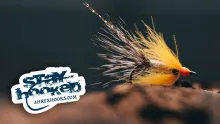
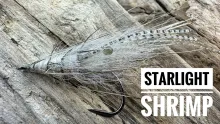

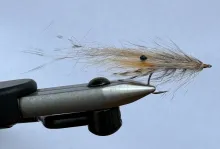
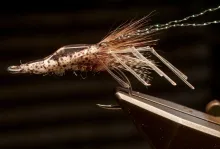
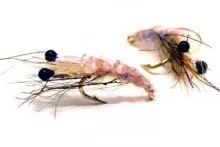

Hi there
I will be
Hi there
I will be in Sweden over christmas and new years . Can anybody give me some information regarding flyfishing any where in Sweden for that time of year .
Thanks
Lyle
Tony, There are t
Tony,
There are two gear shops in Morrum near the Laxens Hus (House of Salmon). One is called Fiskeshopen. Fiskeshopen is online, but only in Swedish. The other one is Bringsen, especially famous for their reels. They are online too, but also Swedish only. Bringsen could be closed. It's been for sale for a while.
Laxens Hus is the place with the underwater view of the river, and is a museaum as well as the place that you buy licenses. Everything is quite close together and both shops are within walking distance of both the river and the museum.
Martin
Do you know of a pla
Do you know of a place on the Moorum where a sporting goods shop exists near an underwater observation park? If so, can you name the shop and address and the nearest town? The nearby fishing is not in the sea, but is upriver.
I would greatly appreciate any assistance you can provide.
excellent reading fo
excellent reading for an englishman lost in sweden.
Gregg,
great to k
Gregg,
great to know, that GFF helps you through your down time. There is nothing like a few weeks off at the tying desk.
Thanks for your comments,
Kasper
Kasper,
I normally
Kasper,
I normally do not use the net to peruse flyfishing, preferring the print media, but due to a recent shoulder injury I have had unwanted down time, and, seeking reference to a fly pattern accidentely came upon your site. Well done I say! I am interested in all things flyfishing and your site sparked my interest. I find it thorough to extreme, with wonderful photography, great all 'round information, and very unselfserving, which I appreciate. Keep up the great work!
Gregg
Thank you for this
Thank you for this great informative article on seatrout. I recently moved from Amsterdam to Landskrona and started fishing. This autumn I caught most of my fish in the Rönneå in northern Skåne. All salmon except for one seatrout which I caught today. The season for the Rönneå closes tomorrrow. I've been fishing for salmon and seatrout with spinners this fall in rivers but in the future I want to start flyfishing in the saltwater coastal areas. Can you recommend some spots around Landskrona to fish for seatrout? And what sort of flyrod and line should I use?
Thank you,
Maarten
Hej, thanks for the
Hej,
thanks for the great article. I will visit our relatives in Ystad in April and will try to catch some sea trouts with the fly. Could you recommend me some good places between Malmö and Simrichshamn - would be a great pleasur and help for me.
Thanks a lot and a happy year 2009.
Jan, Luebeck (Germany)
I will be visiting t
I will be visiting the island of Oland this July and want to know where the closest place to catch sea trout will be. or if it even possible this time of the year.
Dick,
it is hard
Dick,
it is hard to say whether the green coloured trout are kelts or chromers. Maybe you could send a photo?
In September the kelts should have gained what they lost during the spawning.
Kasper
Great article, I tra
Great article, I travel every year from Holland in april and september to Sweden's west coast and the flyfishing is always good.
Fishing in april and september at night also gives me good fish, not only during summer.
One question: 95% of my catches are somewhat greener coloured sea trouts, are these all kelts, and should be returned?
Guys,
thank you f
Guys,
thank you for all your comments. If we get the chance we might write something about garfish, cod and the difficult mullet.
Kasper
Super article.Most o
Super article.Most of us can only visit on holiday (july /aug)...how about some more on the summer months, ie mullet /garfish/cod ?
Nice pics and great
Nice pics and great article. Looks like a blast with a fly rod. Looks chilly too.....it's about 95 here in the states. :-)
Hi Kasper, thank you
Hi Kasper, thank you very much for the great article. Beautiful pictures and a lot of information. To pick up your website is always a suprise and a great fun
This is absolutely a
This is absolutely awesome! Good, interesting and informative, big kudos for the pictures wich really make the article easy to read, eyecandy!
Altough i miss an article about seatroutfishing in the stockholm archipelago where the fish is both big, common and relatively easy to find, something to arrange?